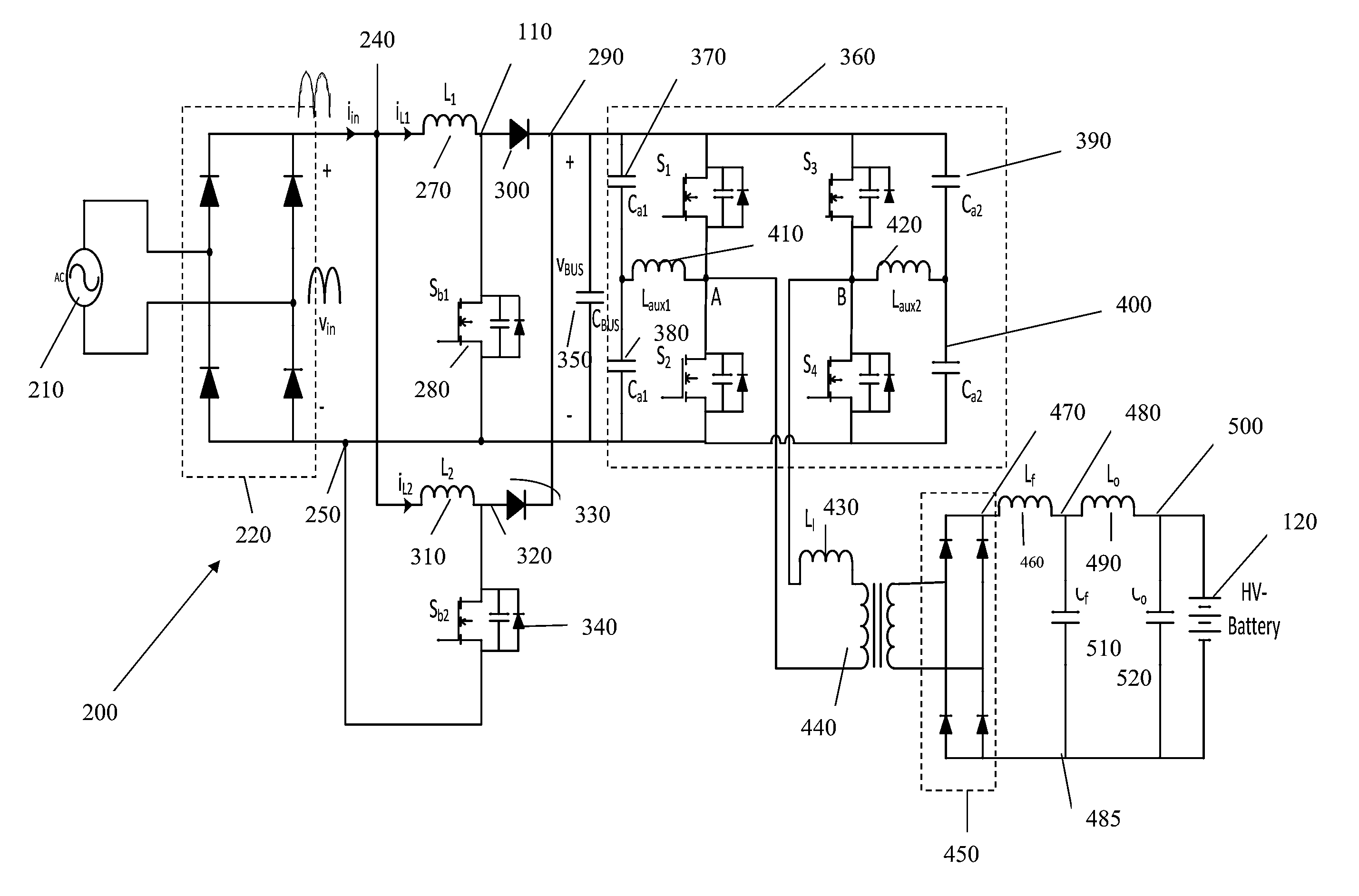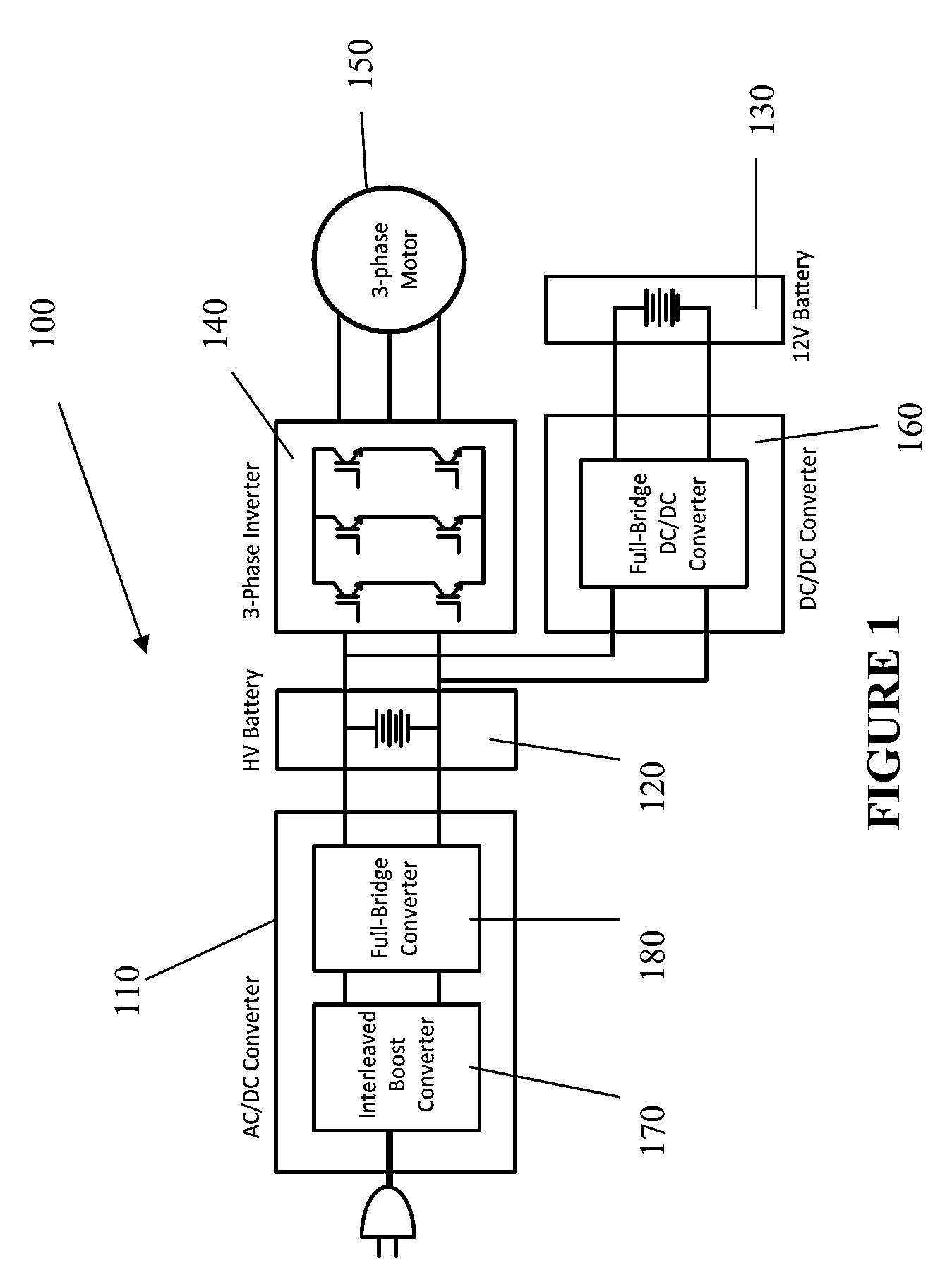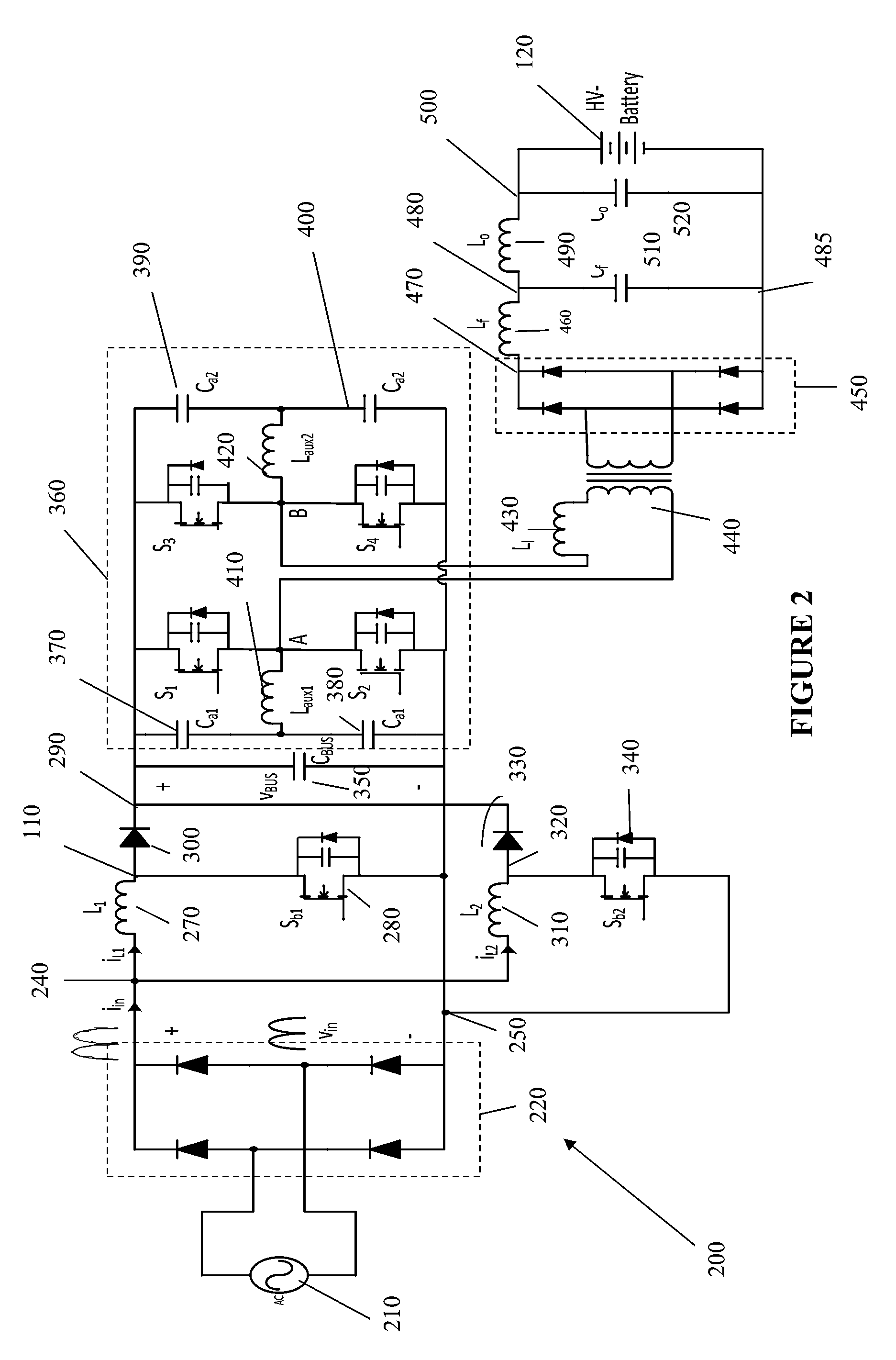Input power controller for AC/DC battery charging
a power controller and ac/dc technology, applied in the direction of home appliance efficiency improvement, transportation and packaging, sustainable buildings, etc., can solve the problems of high conduction loss, rise of conventional ac/dc converter control method and system, etc., and achieve the effect of optimal duty ratio
- Summary
- Abstract
- Description
- Claims
- Application Information
AI Technical Summary
Benefits of technology
Problems solved by technology
Method used
Image
Examples
Embodiment Construction
[0032]The terms “coupled” and “connected”, along with their derivatives, may be used herein. It should be understood that these terms are not intended as synonyms for each other. Rather, in particular embodiments, “connected” may be used to indicate that two or more elements are in direct physical or electrical contact with each other. “Coupled” may be used to indicate that two or more elements are in either direct or indirect (with other intervening elements between them) physical or electrical contact with each other, or that the two or more elements co-operate or interact with each other (e.g. as in a cause and effect relationship).
[0033]The present invention provides a controller that regulates the input power of a PFC converter, instead of the DC-bus voltage. The controller mainly adjusts the amplitude of the input current reference and hence the DC-bus voltage, based on the power demand.
[0034]Nonlinear controllers can optimize the performance of the PFC converter for a wide ra...
PUM
 Login to View More
Login to View More Abstract
Description
Claims
Application Information
 Login to View More
Login to View More - R&D
- Intellectual Property
- Life Sciences
- Materials
- Tech Scout
- Unparalleled Data Quality
- Higher Quality Content
- 60% Fewer Hallucinations
Browse by: Latest US Patents, China's latest patents, Technical Efficacy Thesaurus, Application Domain, Technology Topic, Popular Technical Reports.
© 2025 PatSnap. All rights reserved.Legal|Privacy policy|Modern Slavery Act Transparency Statement|Sitemap|About US| Contact US: help@patsnap.com



